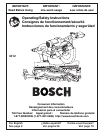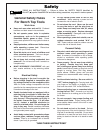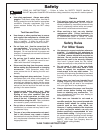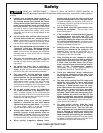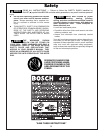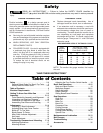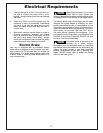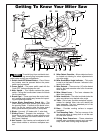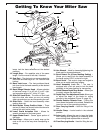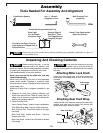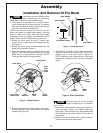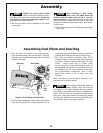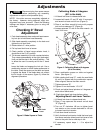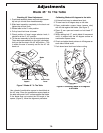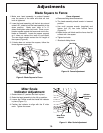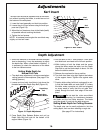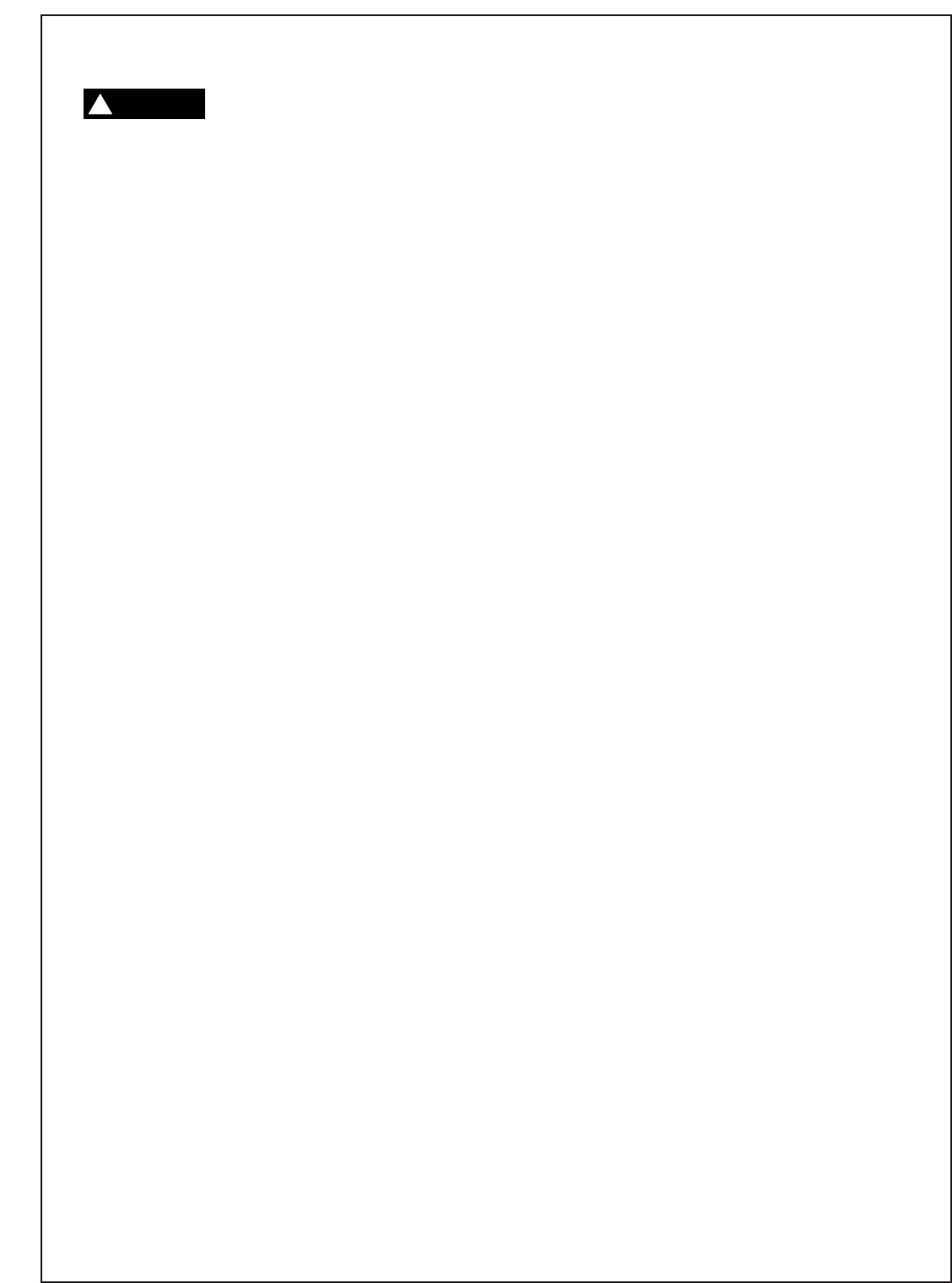
“SAVE THESE INSTRUCTIONS”
4.
● Inspect your workpiece before cutting. If
workpiece is bowed or warped, clamp it with
the outside bowed face toward the fence.
Always make certain that there is no gap be-
tween the workpiece, fence and table along
the line of the cut. Bent or warped workpieces
can twist or rock and may cause binding on the
spinning saw blade while cutting. Also, make
sure there are no nails or foreign objects in the
workpiece.
● Do not use the saw until the table is clear of
all tools, wood scraps, etc., except the work-
piece. Small debris or loose pieces of wood or
other objects that contact the revolving blade
can be thrown with high speed at the operator.
● Do not feed workpiece into the blade or cut
“freehand” in any way. Workpiece must be
stationary and clamped or braced by your
hand. Saw must be fed through the workpiece
smoothly and at a rate which will not overload
the saw’s motor.
● Cut only one workpiece at a time. Multiple
workpieces cannot be adequately clamped or
braced and may bind on the blade or shift dur-
ing cutting.
● Be certain the miter saw is mounted or
placed on a level, firm work surface before
using. A level and firm work surface reduces
the risk of the miter saw becoming unstable.
● Plan your work. Provide adequate support
accessories such as tables, saw horses,
table extension, etc. for workpieces wider or
longer than the table top (see page 20).
Workpieces longer or wider than the miter saw
table can tip if not securely supported. If the
cutoff piece or workpiece tips it can lift the lower
guard or be thrown by the spinning blade.
● Do not use another person as a substitute
for a table extension or as additional sup-
port. Unstable support for the workpiece can
cause the blade to bind or the workpiece to shift
during the cutting operation pulling you and the
helper into the spinning blade.
● The cutoff piece must not be jammed
against or pressured by any other means
against the spinning saw blade. If confined,
i.e. using length stops, it could get wedged
against the blade and thrown violently.
● Always use a clamp or a fixture designed to
properly support round material such as
dowel rods, or tubing. Rods have a tendency
to roll while being cut, causing the blade to “bite”
and pull the work with your hand into the blade.
● When cutting irregularly shaped work-
pieces, plan your work so it will not slip and
pinch the blade and be torn from your hand.
A piece of molding, for example, must lie flat or
be held by a fixture or jig that will not let it twist,
rock or slip while being cut.
● Let the blade reach full speed before con-
tacting the workpiece. This will help avoid
thrown workpieces.
● If the workpiece or blade becomes jammed
or bogged down, turn miter saw “OFF” by
releasing switch. Wait for all moving parts
to stop and unplug the miter saw, then work
to free the jammed material. Continued saw-
ing with jammed workpiece could cause loss of
control or damage to miter saw.
● Braking action of the saw causes the saw
head to jerk downward. Be ready for this
reaction when making an incomplete cut or
when releasing the switch before the head is
completely in the down position.
● After finishing the cut, release the switch,
hold the saw arm down and wait for blade to
stop before removing work or cutoff piece.
If blade does not stop within five (5) sec-
onds, unplug the saw and follow the instruc-
tions in the Troubleshooting section.
REACHING WITH YOUR HAND UNDER A
COASTING BLADE IS DANGEROUS!
● There are additional safety instructions
for particular operations of the saw in the
operating section. Read the rest of the man-
ual for safe operation.
● For slide action cutting, first PULL saw head
assembly away from the fence, until blade
clears the workpiece or to its maximum
extension if blade cannot clear the work-
piece. Make certain the clamp does not inter-
fere with the guard and head assembly.
Second, turn saw “ON” and lower the saw to
the table. Then PUSH saw through the work-
piece. Release the switch and wait for the
blade to completely stop before raising the
head assembly and removing the workpiece.
Never “pullcut” since blade may climb the work-
piece causing KICKBACK.
● For chop action cutting, slide the head
assembly to the rear as far as it will go and
tighten slide lock knob. Then turn the saw
“ON” and lower the head assembly to make
the cut. Release the switch and wait for the
blade to completely stop before raising the
head assembly and removing the workpiece.
Failure to tighten the slide lock knob can cause
the blade to suddenly climb up on the top of the
workpiece and force itself toward you.
Safety
“READ ALL INSTRUCTIONS” — Failure to follow the SAFETY RULES identified by
BULLET (
●) symbol listed BELOW and other safety precautions, may result in serious person-
al injury.
WARNING
!



